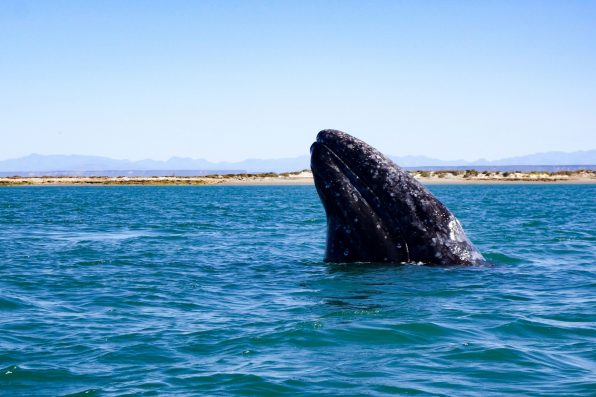This Is The Only Location Where Pacific Gray Whales Watch You Back And Regularly Socialize With Humans

One of the best regions in the world for whale watching is in Mexico’s Baja California in the San Ignacio Lagoon.
It is also the only location where whales will watch you back. The Pacific gray whales in this area regularly socialize with humans.
They are the friendliest whales that marine biologists have ever seen, which is surprising because they are known for being very protective of their young.
Additionally, gray whales were hunted to near extinction just a century ago, making their outgoing personalities even more baffling.
Whatever the case, these gray whales are a natural wonder and worth visiting. San Ignacio Lagoon is the best place to witness the great gray whale migration.
Each year, over 3,000 Pacific gray whales swim more than 12,000 miles from their feeding grounds in the Arctic off the coast of Alaska to the Pacific coast of Baja California, where they will mate, give birth, and nurse their young.
They arrive in Mexico’s Baja California from January to March. During this time, gray whale mothers often bring their newborn calves to float alongside whale-watching vessels.
They lift their heads above the water, almost appearing to invite people to pet them. So, there’s a good chance that you may get to touch one of the gargantuan creatures as it slowly glides past.
Before San Ignacio Lagoon became a coveted whale-watching spot, it was a massacre site. In the early 1900s, the invention of factory ships led to an era of intensive commercial whaling.

Kylie – stock.adobe.com – illustrative purposes only, not the actual whale
The gray whale population decreased to fewer than 2,000. Finally, international bans on whaling were implemented in the 1940s.
Today, gray whales are protected by several international and national laws that are upheld by the Mexican government.
Their numbers have reached the point where the International Union for Conservation of Nature considers them a species of “least concern.”
When done ethically, tourism can help strengthen humanity’s connection with the environment, lead to conservation efforts, and motivate economies to better support vulnerable species in fragile ecosystems.
Whale watching in Baja California is one of the world’s top wildlife experiences. It also brings a sustainable stream of revenue to the area.
Whale-watching tour operators travel through the gray whale migration pathway from California to Alaska.
They make sure not to disturb the whales or damage their habitat. Even though gray whales often seek out human interaction, they must be on their own terms. This means tour operators must not chase down gray whales.
According to Mexican regulations, only licensed boats are allowed into the gray whales’ nursing grounds. If it is discovered that an operator is breaking any rules, they risk losing their license.
Overall, the experience of touching a gray whale is a wonderful opportunity and a privilege. It leaves a lasting impression and deepens one’s appreciation of nature.
To make sure you have a safe and memorable whale-touching experience, choose a reputable and ethical tour operator, be aware of the guidelines for interacting with whales, and be respectful of the whales’ natural behavior and well-being.
Sign up for Chip Chick’s newsletter and get stories like this delivered to your inbox.
More About:Travel





